Standard Measuring of E-Learning to Assess the Quality Level of E-Learning Outcomes: Saudi Electronic University Case Study
Abstract
1. Introduction
2. Literature Review
2.1. Key Identified E-Learning Quality Assessment Standards Employed in Other Countries
2.1.1. United States of America (USA)
2.1.2. Australia
2.1.3. Canada
2.1.4. Netherlands and Belgium
2.1.5. Norway
2.1.6. United Kingdom (UK)
2.1.7. Kingdom of Saudi Arabia
3. Methodology
3.1. Data Collection
3.2. Data Analysis
4. Key Observations
5. Proposed E-Learning Quality Assessment Standard
6. Discussions and Implications of the Study
6.1. Case Study of SEU: An Overview
6.2. Discussions
6.3. Implications of the Study
7. Conclusions
Limitations and Further Research Directions
Author Contributions
Funding
Institutional Review Board Statement
Informed Consent Statement
Data Availability Statement
Acknowledgments
Conflicts of Interest
References
- Aljawarneh, S.A. Reviewing and exploring innovative ubiquitous learning tools in higher education. J. Comput. High. Educ. 2020, 32, 57–73. [Google Scholar] [CrossRef]
- Barana, A.; Marchisio, M. Ten good reasons to adopt an automated formative assessment model for learning and teaching mathematics and scientific disciplines. Procedia-Soc. Behav. Sci. 2016, 228, 608–613. [Google Scholar] [CrossRef]
- Esposito, C.; Su, X.; Aljawarneh, S.A.; Choi, C. Securing collaborative deep learning in industrial applications within adversarial scenarios. IEEE Trans. Ind. Inform. 2018, 14, 4972–4981. [Google Scholar] [CrossRef]
- Lizcano, D.; Lara, J.A.; White, B.; Aljawarneh, S. Blockchain-based approach to create a model of trust in open and ubiquitous higher education. J. Comput. High. Educ. 2020, 32, 109–134. [Google Scholar] [CrossRef]
- Wong, T.-K.; Xie, H.; Zou, D.; Wang, F.L.; Tai Tang, J.K.; Kong, A.; Kwan, R. How to facilitate self regulated learning? A case study on open educational resources. J. Comput. Educ. 2019, 7, 51–77. [Google Scholar] [CrossRef]
- Ehlers, U.D.; Hilera, J.R. Special Issue on quality in e-learning. J. Comput. Assist. Learn. 2012, 28, 1–3. [Google Scholar] [CrossRef]
- Allen, E.; Seaman, J. Making the Grade: Online Education in the United States, 2006 (Southern ed.); The Sloan Consortium: Cambridge, MA, USA, 2007. [Google Scholar]
- An, H.; Shin, S.; Lim, K. The effects of different instructor facilitation approaches on students’ interactions during asynchronous online discussions. Comput. Educ. 2009, 53, 749–760. [Google Scholar] [CrossRef]
- Chen, E.T. Successful e-learning in corporations. Commun. Indian Inst. Manag. Ahmedabad 2008, 8, 48–54. [Google Scholar]
- McKenzie, K.; Murray, A. E-learning benefits nurse education and helps shape students’ professional identity. Nurs. Times 2010, 106, 17–19. [Google Scholar]
- Vernadakis, N.; Antoniou, P.; Giannousi, M.; Zetou, E.; Kioumourtzoglou, E. Comparing hybrid learning with traditional approaches on learning the Microsoft Office Power Point 2003 program in tertiary education. Comput. Educ. 2011, 56, 188–199. [Google Scholar] [CrossRef]
- Huang, E.Y.; Lin, S.W.; Huang, T.K. What type of learning style leads to online participation in the mixed-mode e-learning environment? A study of software usage instruction. Comput. Educ. 2011, 58, 338–349. [Google Scholar] [CrossRef]
- Daradoumis, T.; Bassi, R.; Xhafa, F.; Caballé, S. A review on massive e-learning (MOOC) design, delivery and assessment. In Proceedings of the 2013 Eighth International Conference on P2P, Parallel, Grid, Cloud And Internet Computing, Compiegne, France, 28–30 October 2013; pp. 208–213. [Google Scholar]
- Ng, E. Fostering pre-service teachers’ self-regulated learning through self- and peer assessment of wiki projects. Comput. Educ. 2016, 98, 180–191. [Google Scholar] [CrossRef]
- Bremer, C. Enhancing e-learning quality through the application of the AKUE procedure model. J. Comput. Assist. Learn. 2012, 28, 15–26. [Google Scholar] [CrossRef]
- Dobre, I. An Overview of the Most Important Aspects Related to Quality Assurance in Computer Supported Collaborative E-Learning. Int. J. Comput. Sci. Res. Appl. 2012, 2, 25–30. [Google Scholar]
- Teodora, V.; Mioara, U.; Magdalena, N. Quality through E-Learning and Quality for E-Learning. J. Knowl. Manag. Econ. Inf. Technol. 2013, 3, 1–5. [Google Scholar]
- Aljawarneh, S.A.; Vangipuram, R. GARUDA: Gaussian dissimilarity measure for feature representation and anomaly detection in Internet of things. J. Supercomput. 2020, 76, 4376–4413. [Google Scholar] [CrossRef]
- Bulut, S. Assessing online learners’ academic self-efficacy in a symbiotic learning environment. SSRN 2019, 15. [Google Scholar] [CrossRef]
- Dabowsa, N.I.A.; Amaitik, N.M.; Maatuk, A.M.; Aljawarneh, S.A. A hybrid intelligent system for skin disease diagnosis. In Proceedings of the 2017 International Conference on Engineering and Technology (ICET), Antalya, Turkey, 21–23 August 2017. [Google Scholar] [CrossRef]
- Artino, A.R. Online or face-to-face learning? Exploring the personal factors that predict students’ choice of instructional format. Internet High. Educ. 2010, 13, 272–276. [Google Scholar] [CrossRef]
- Folorunso, O.; Ogunseye, O.; Sharma, K.S. An exploratory study of the critical factors affecting the acceptability of e-learning in Nigerian universities. Inf. Manag. Comput. Secur. 2006, 14, 496–505. [Google Scholar] [CrossRef]
- Ozkan, S.; Koseler, R. Multi-dimensional students’ evaluation of e-learning systems in the higher education context: An empirical investigation. Comput. Educ. 2009, 53, 1285–1296. [Google Scholar] [CrossRef]
- Allen, E.; Seaman, J. Grade Level: Tracking Online Education in the United States; Babson Survey Research Group: Babson Park, Newburyport, MA, USA, 2015. [Google Scholar]
- Kashorda, M.; Waema, T. E-Readiness Survey of Kenyan Universities (2013) Report; Kenya Education Network: Nairobi, Kenya, 2014. [Google Scholar]
- Kisanga, D. Determinants of Teachers’ Attitudes towards E-Learning in Tanzanian Higher Learning Institutions. Int. Rev. Res. Open Distrib. Learn. 2016, 17, 109–125. [Google Scholar] [CrossRef]
- Makokha, L.; Mutisya, D.N. Status of E-Learning in Public Universities in Kenya. Int. Rev. Res. Open Distrib. Learn. 2016, 17, 341–359. [Google Scholar] [CrossRef]
- Chawinga, W.D. Increasing Access to Higher Education through Open and Distance Learning: Empirical Findings from Mzuzu University, Malawi. Int. Rev. Res. Open Distrib. Learn. 2016, 17, 1–20. [Google Scholar] [CrossRef]
- Timbi-Sisalima, C.; Sánchez-Gordón, M.; Hilera-Gonzalez, J.R.; Otón-Tortosa, S. Quality Assurance in E-Learning: A Proposal from Accessibility to Sustainability. Sustainability 2022, 14, 3052. [Google Scholar] [CrossRef]
- Curpănaru, G.L. The Model of Quality Assurance in Education by Implementing E-Learning and Blended Learning. In Proceedings of the 2021 International Conference on Modern Management and Education Research (MMER 2021), Shanghai, China, 4–5 July 2021; Atlantis Press: Zhengzhou, China, 2021; pp. 102–104. [Google Scholar] [CrossRef]
- Jafar Jalali, S.M.; Mahdizadeh, E.; Mahmoudi, M.R.; Moro, S. Analytical assessment process of e-learning domain research between 1980 and 2014. Int. J. Manag. Educ. 2018, 12, 43–56. [Google Scholar] [CrossRef]
- Lara, J.A.; Lizcano, D.; Martínez, M.A.; Pazos, J.; Riera, T. A system for knowledge discovery in e-learning environments within the European Higher Education Area—Application to student data from Open University of Madrid, UDIMA. Comput. Educ. 2014, 72, 23–36. [Google Scholar] [CrossRef]
- Oliver, R. Quality assurance and e-learning: Blue skies and pragmatism. ALT-J 2005, 13, 173–187. [Google Scholar] [CrossRef]
- Misut, M.; Pribilova, K. Measuring of Quality in the Context of e-Learning. Procedia-Soc. Behav. Sci. 2015, 177, 312–319. [Google Scholar] [CrossRef]
- Weis, L. Theoretical approach to E-learning quality. Econ. Ecol. Socium 2021, 5, 33–45. [Google Scholar] [CrossRef]
- Lewis, R.C.; Booms, B.H. The marketing aspect of service quality. In Emerging Perspective on Service Marketing; Berry, L., Shostack, G., Upah, G., Eds.; American Marketing Association: Chicago, IL, USA, 1983; pp. 99–107. [Google Scholar]
- Aagja, J.P.; Garg, R. Measuring perceived service quality for public hospitals (PubHosQual) in the Indian context. Int. J. Pharm. Healthc. Mark. 2010, 4, 60–83. [Google Scholar] [CrossRef]
- Ganguli, S.; Roy, S.K. Generic technology-based service quality dimensions in banking: Impact on customer satisfaction and loyalty. Int. J. Bank Mark. 2011, 29, 168–189. [Google Scholar] [CrossRef]
- McKinnon, K.R.; Walker, S.H.; Davis, D. Benchmarking A manual for Australian Universities; Department of Education, Training and Youth Affairs (DETYA), Higher Education Division: Canberra, Australia, 2000. [Google Scholar]
- Newton, J. What is quality? In Embedding Quality Culture in Higher Education; Bollaert, L., Brus, S., Curvale, B., Harvey, L., Helle, E., Jensen, H., Komljenovič, J., Orphanides, A., Sursock, A., Eds.; EUA Cases Studies; European University Association: Brussels, Belgium, 2007; pp. 14–20. [Google Scholar]
- Phipps, R.; Merisotis, J. Quality on the Line: Benchmarks for Success in Internet-Based Distance Education; The Institute for Higher Education Policy: Washington, DC, USA, 2000. [Google Scholar]
- Sims, R.; Dobbs, G.; Hand, T. Enhancing quality in online learning: Scaffolding design and planning through proactive evaluation. Distance Educ. 2002, 23, 135–148. [Google Scholar] [CrossRef]
- Suddaby, G.; Milne, J. Coordinated, collaborative and coherent: Developing and implementing e-learning guidelines within a national tertiary education system. Campus-Wide Inf. Syst. 2008, 25, 114–128. [Google Scholar] [CrossRef]
- Boettcher, J.V.; Conrad, R.M. Faculty Guide for Moving Teaching and Learning to the Web; League for Innovation in the Community College: Mission Viejo, CA, USA, 1999; Available online: www.league.org (accessed on 31 March 2022).
- Bridgland, A.; Goodacre, C. Benchmarking in Higher Education: A Framework for Benchmarking for Quality Improvement Purposes; Council of Australian University Directors of Information Technology: Deakin, Australia, 2005. [Google Scholar]
- Inglis, A. Quality improvement, quality assurance and benchmarking; comparing two frameworks for managing quality processes in open and distance learning. Int. Rev. Res. Open Distance Learn. 2005, 6, 1–13. [Google Scholar] [CrossRef]
- Tarus, J.K.; Gichoya, D.; Muumbo, A. Challenges of Implementing E-Learning in Kenya: A Case of Kenyan Public Universities. Int. Rev. Res. Open Distrib. Learn. 2015, 16. [Google Scholar] [CrossRef]
- Azawei, A.; Parslow, P.; Lundqvist, K. Barriers and Opportunities of E-Learning Implementation in Iraq: A Case of Public Universities. Int. Rev. Res. Open Distrib. Learn. 2016, 17. [Google Scholar] [CrossRef]
- Ngandu, M.R.; Brown, C. Influence of ideological contradictions when adopting ICTs to create authentic learning activities. In Proceedings of the Conference on Emerging Technologies and Authentic Learning in Higher Vocational Education, Cape Town, South Africa, 31 August–3 September 2015. [Google Scholar]
- Inglis, A. Approaches to the validation of quality frameworks for e-learning. Qual. Assur. Educ. 2008, 16, 347–362. [Google Scholar] [CrossRef]
- Jung, I.S. The dimensions of e-learning quality: From the learner’s perspective. Educ. Technol. Res. Dev. 2010, 59, 445–464. [Google Scholar] [CrossRef]
- Ireland, J.; Correia, H.; Griffin, T. Developing quality in e-learning: A framework in three parts. Qual. Assur. Educ. 2009, 17, 145–150. [Google Scholar] [CrossRef]
- Erkkilä, T.; Piironen, O. What counts as world class? Global university rankings and shifts in institutional strategies. In World Class Universities; Springer: Singapore, 2020; pp. 171–196. Available online: https://link.springer.com/chapter/10.1007/978-981-15-7598-3_11 (accessed on 21 July 2022).
- Hazelkorn, E. World-class universities or world-class systems? Rankings and higher education policy choices. Rank. Account. High. Educ. Uses Misuses 2013, 71–94. [Google Scholar]
- Hansson, H. E-Learning Quality. Aspects and Criteria for Evaluation of E-Learning in Higher Education; Swedish National Agency for Higher Education: Luntmakargatan, Stockholm, 2008.
- Alam, M.M.; Ahmad, N.; Naveed, Q.N.; Patel, A.; Abohashrh, M.; Khaleel, M.A. E-learning services to achieve sustainable learning and academic performance: An empirical study. Sustainability 2021, 13, 2653. [Google Scholar] [CrossRef]
- Chen, F.H. Sustainable education through e-learning: The case study of ilearn 2. 0. Sustainability 2021, 13, 10186. [Google Scholar] [CrossRef]
- Klašnja-Milićević, A.; Ivanović, M. E-learning personalization systems and sustainable education. Sustainability 2021, 13, 6713. [Google Scholar] [CrossRef]
- Choudhury, S.; Pattnaik, S. Emerging themes in e-learning: A review from the stakeholders’ perspective. Comput. Educ. 2020, 144, 103657. [Google Scholar] [CrossRef]
- Lee, J.; Song, H.D.; Hong, A.J. Exploring factors, and indicators for measuring students’ sustainable engagement in e-learning. Sustainability 2019, 11, 985. [Google Scholar] [CrossRef]
- Mahoney, J.; Hall, C. Using technology to differentiate and accommodate students with disabilities. E-Learn. Digit. Media 2017, 14, 291–303. [Google Scholar] [CrossRef]
- Sadeghi, S.H. E-Learning Instructional Design Practice in American and Australian Institutions. Int. Assoc. Dev. Inf. Soc. 2017. [Google Scholar]
- Azeiteiro, U.M.; Bacelar-Nicolau, P.; Caetano, F.J.; Caeiro, S. Education for sustainable development through e-learning in higher education: Experiences from Portugal. J. Clean. Prod. 2015, 106, 308–319. [Google Scholar] [CrossRef]
- Masoumi, D.; Lindström, B. Quality in e-learning: A framework for promoting and assuring quality in virtual institutions. J. Comput. Assist. Learn. 2012, 28, 27–41. [Google Scholar] [CrossRef]
- Allen, I.E.; Seaman, J. Class differences: Online education in the United States. Sloan Consort. 2010. [Google Scholar]
- Sangrà, A.; González-Sanmamed, M. The role of information and communication technologies in improving teaching and learning processes in primary and secondary schools. Australas. J. Educ. Technol. 2010, 26. [Google Scholar] [CrossRef]
- Lee-Post, A. E-Learning Success Model: An Information Systems Perspective. Electron. J. E-Learn. 2009, 7, 61–70. [Google Scholar]
- Marshall, S.; Mitchell, G.; Beames, S. Benchmarking for quality improvement: The e-learning maturity model. Ascilite 2007. [Google Scholar]
- Pawlowski, J.M. The quality adaptation model: Adaptation and adoption of the quality standard ISO/IEC 19796-1 for learning, education, and training. J. Educ. Technol. Soc. 2007, 10, 3–16. [Google Scholar]
- Fresen, J. A taxonomy of factors to promote quality web-supported learning. Int. J. E-Learn. 2007, 6, 351–362. [Google Scholar]
- Johnson, S.M. The Workplace Matters: Teacher Quality, Retention, and Effectiveness. Working Paper. Natl. Educ. Assoc. Res. Dep. 2006. [Google Scholar]
- Ehlers, U.D. Quality in e-learning from a learner’s perspective. Eur. J. Open Distance E-Learn. 2004, 7. Available online: https://old.eurodl.org/?p=archives&year=2004&&article=101 (accessed on 31 March 2022). [CrossRef]
- Denzin, N.K. Introduction: Entering the field of qualitative research. In Handbook of Qualitative Research; Sage Publications, Inc.: California, CA, USA, 1994; Available online: https://cir.nii.ac.jp/crid/1573668925240107904 (accessed on 31 March 2022).
- Saudi Electronic University. About the Saudi Electronic University. Available online: https://seu.edu.sa/en/about/ (accessed on 27 December 2022).
- Saunders, M.; Lewis, P.; Thornhill, A. Research Methods for Business Students; Pearson Education: Harlow, UK, 2009. [Google Scholar]
- Vlachopoulos, D. Assuring quality in online course design: The roadmap. Int. Rev. Res. Open Distance Learn. 2016, 17, 183–205. [Google Scholar] [CrossRef]
- Jung, I.; Latchem, C. Quality Assurance and Accreditation in Distance Education and Online; Routledge: New York, NY, USA; London, UK, 2012. [Google Scholar]
- Veytia Bucheli, M.; Chao González, M. Las competencias como eje rector de la calidad educativa [Competences as the guiding principle for the quality of education.]. Rev. Electrónica De Divulg. De La Investig. 2013. Available online: http://mistareas.com.mx/redi/4/pdf/SABES_4_2MARIAPDF_V1.pdf (accessed on 31 March 2022).
- Jung, I.; Latchem, C. Assuring quality in Asian open and distance learning. Open Learn. 2007, 22, 235–250. [Google Scholar] [CrossRef]
- Connolly, M.; Jones, N.; O´Shea, J. Quality assurance and e-learning: Reflection from the front line. Qual. High. Educ. 2005, 11, 59–67. [Google Scholar] [CrossRef]
- Jara, M.; Mellar, H. Exploring the mechanisms for assuring quality of e-learning courses in UK higher education institutions. Eur. J. Open Distance E-Learn. 2007, 10. Available online: http://www.eurodl.org/materials/contrib/2007/Jara_Mellar.htm (accessed on 18 December 2014).
- Dondi, C.; Moretti, M. E-learning Quality in European Universities: Different approaches for different purposes. Eur. Univ. Qual. Elearning 2007, 79–90. [Google Scholar]
- Zhang, W.; Cheng, Y.L. Quality assurance in e-learning: PDPP evaluation model and its application. Int. Rev. Res. Open Distrib. Learn. 2012, 13, 66–82. [Google Scholar] [CrossRef]
- Dinevski, D.; Jakončič, J.; Lokar, M.; Žnidaršič, B. A model for quality assessment of electronic learning material. In Proceedings of the ITI 2010 32nd International Conference on Information Technology Interfaces, Cavtat/Dubrovnik, Croatia, 21–24 June 2010; Luzar-Stiffler, V., Jarec, I., Bekic, Z., Eds.; pp. 343–348. [Google Scholar]
- Khazaaleh, M.; Al-Omari, H.; Haziemeh, F. New e-learning Quality Matrix to ELQ assessment at AlBalqa Applied University. J. Theor. Appl. Inf. Technol. 2011, 32, 169–178. [Google Scholar]
- Graham, C.R.; Allen, S.; Ure, D. Benefits and challenges of blended learning environments. In Encyclopedia of Information Science and Technology, First Edition; IGI Global: Pennsylvania, PA, USA, 2005; pp. 253–259. [Google Scholar] [CrossRef]
- Zhang, T.; Shaikh, Z.A.; Yumashev, A.V.; Chłąd, M. Applied model of E-learning in the framework of education for sustainable development. Sustainability 2020, 12, 6420. [Google Scholar] [CrossRef]
- Hafeez, M.; Naureen, S.; Sultan, S. Quality Indicators and Models for Online Learning Quality Assurance in Higher Education. Electron. J. e-Learn. 2022, 20, 374–385. [Google Scholar] [CrossRef]
- Martinez-Arguelles, M.; Batalla-Busquets, J. Perceived service quality and student loyalty in an online university. Int. Rev. Res. Open Distrib. Learn. 2016, 17, 264–279. [Google Scholar] [CrossRef]
- Stepanyan, K.; Littlejohn, A.; Margaryan, A. Sustainable e-learning: Toward a coherent body of knowledge. J. Educ. Technol. Soc. 2013, 16, 91–102. [Google Scholar]
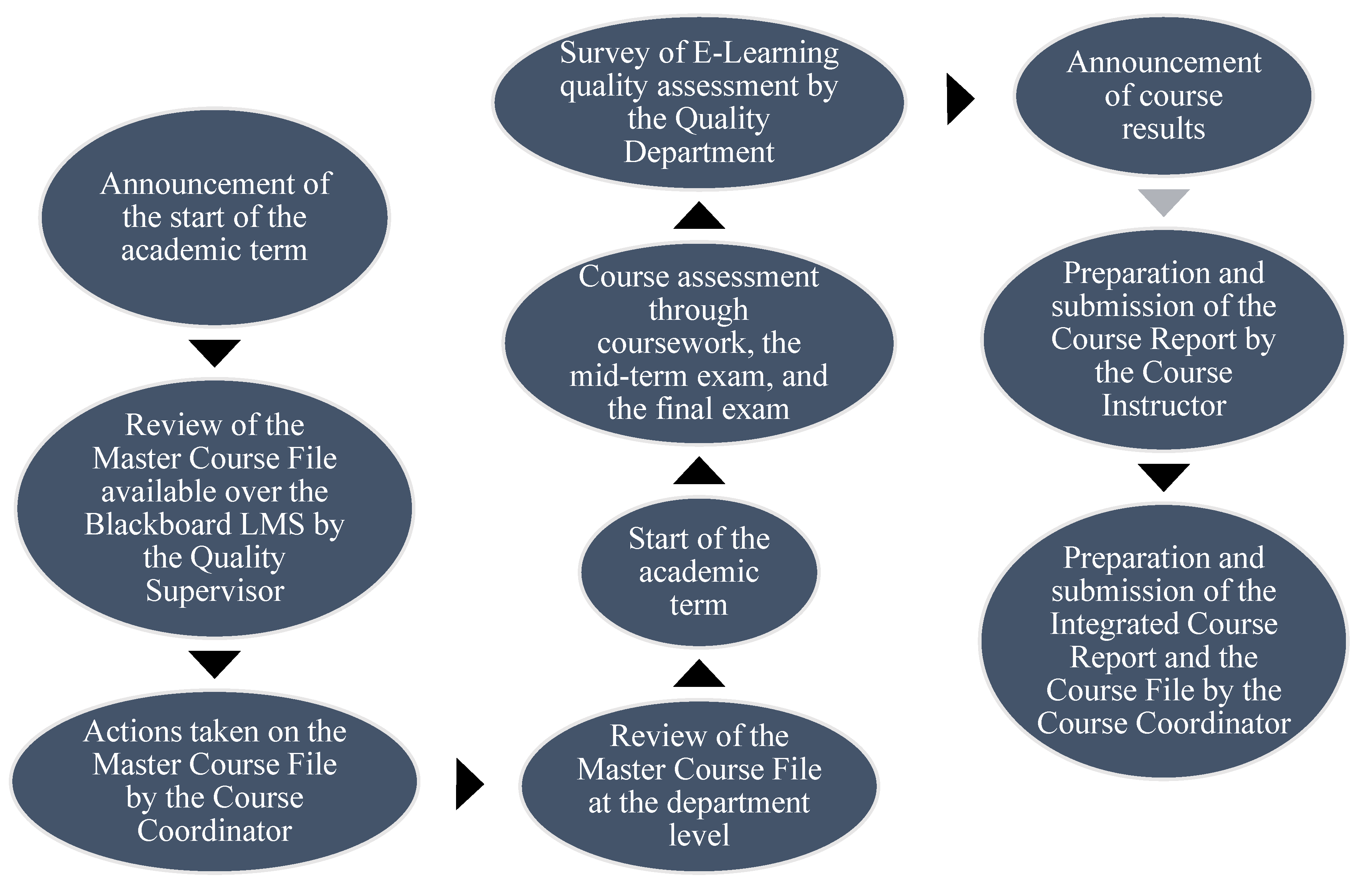
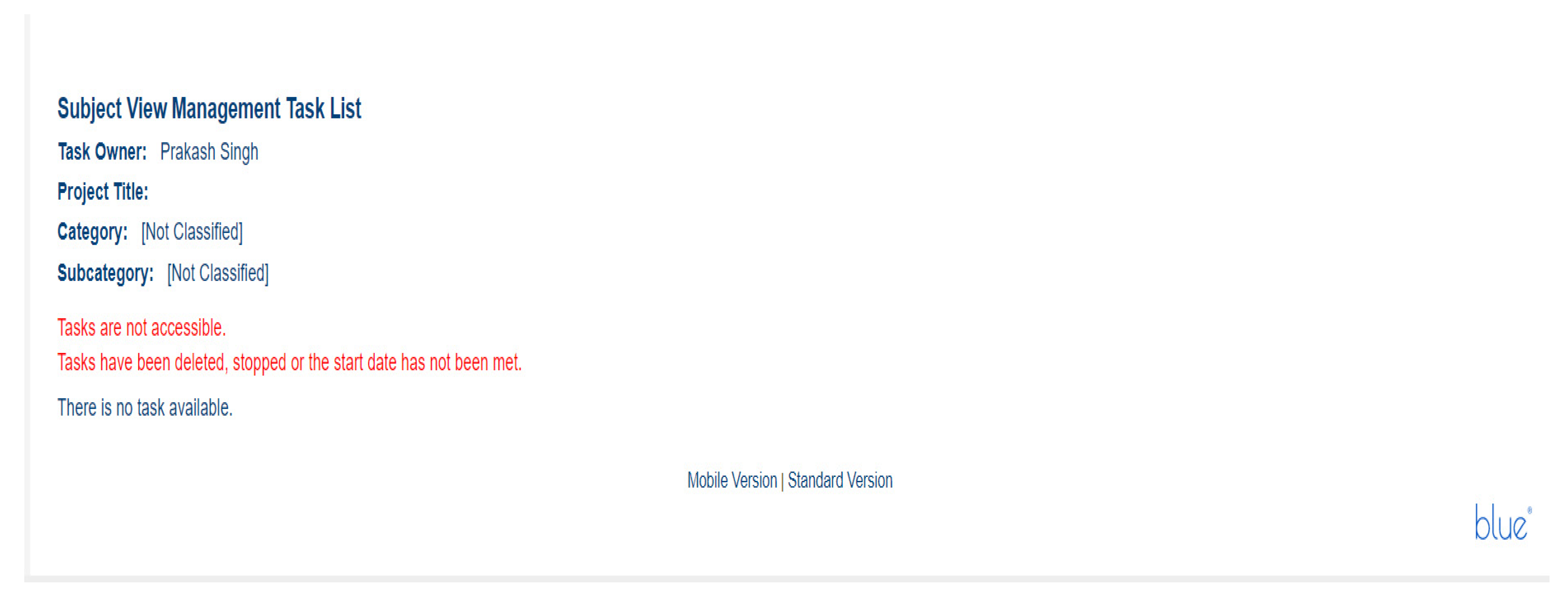
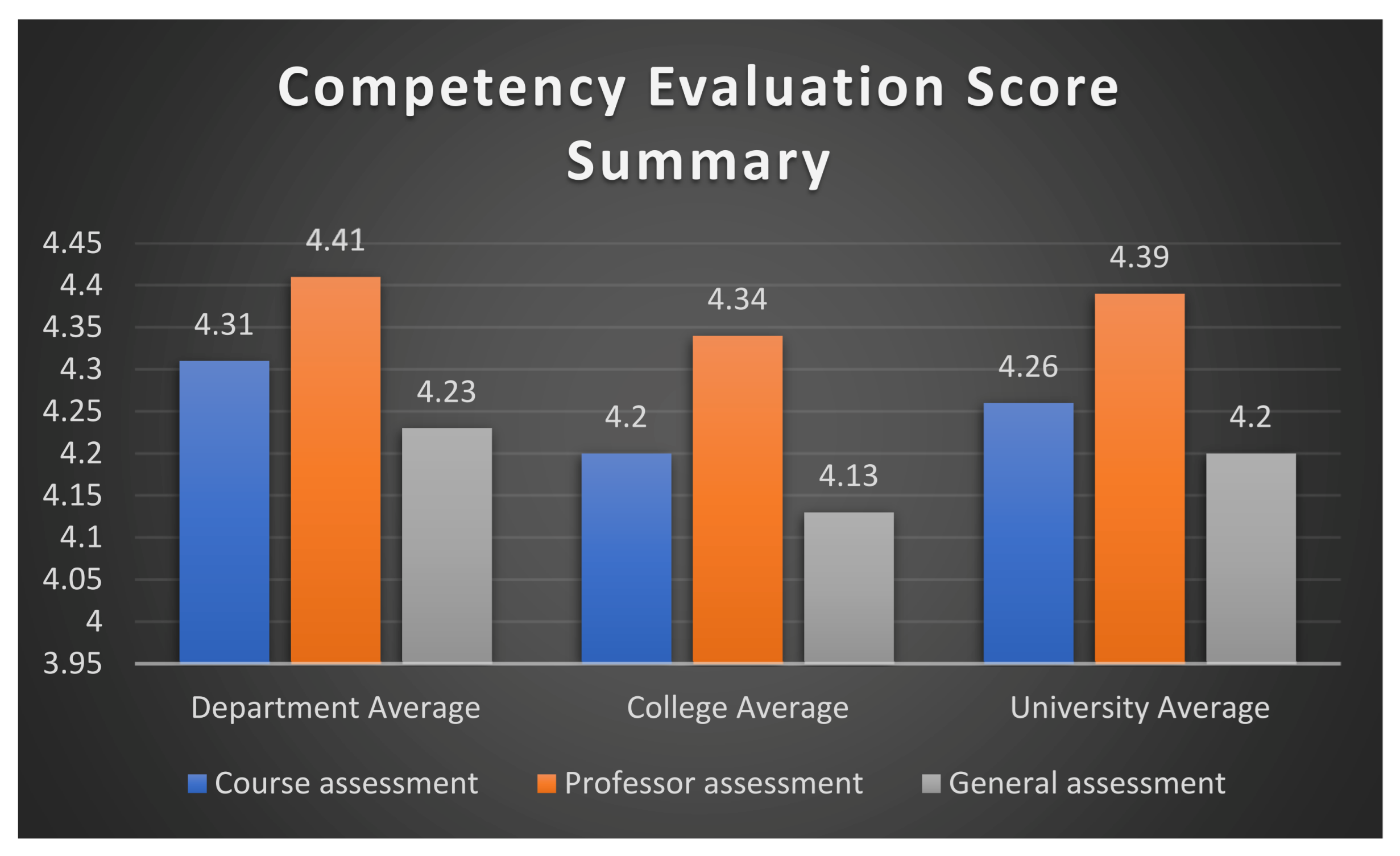
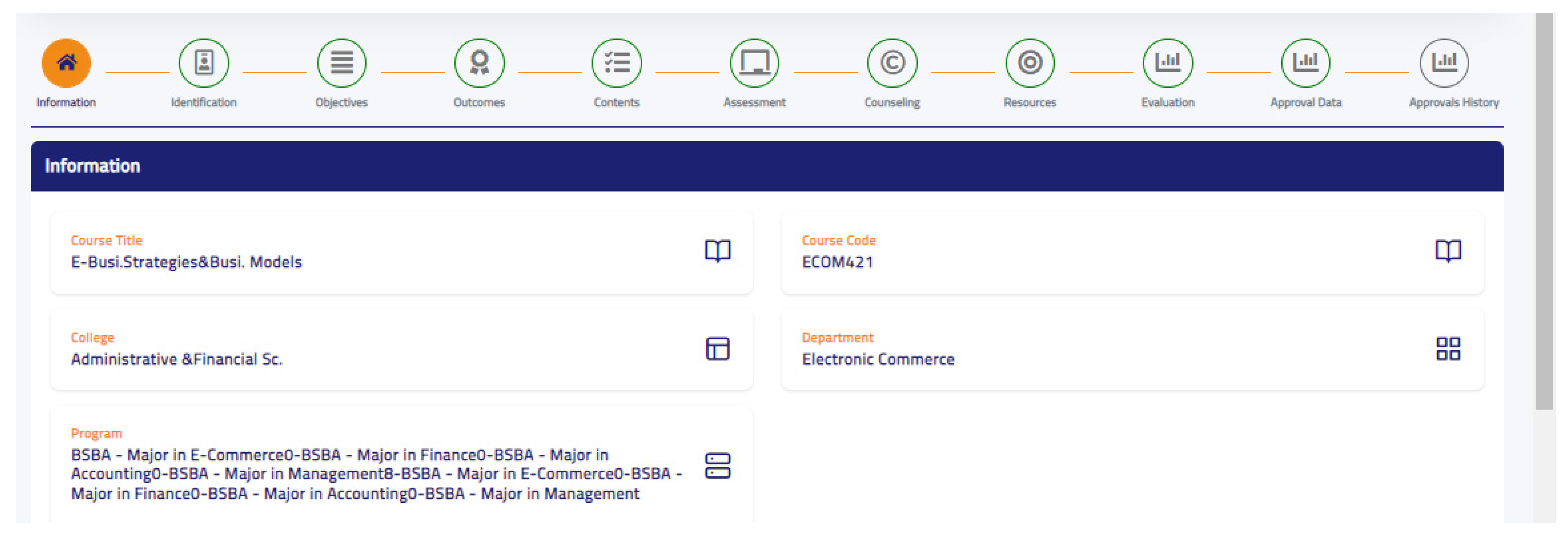

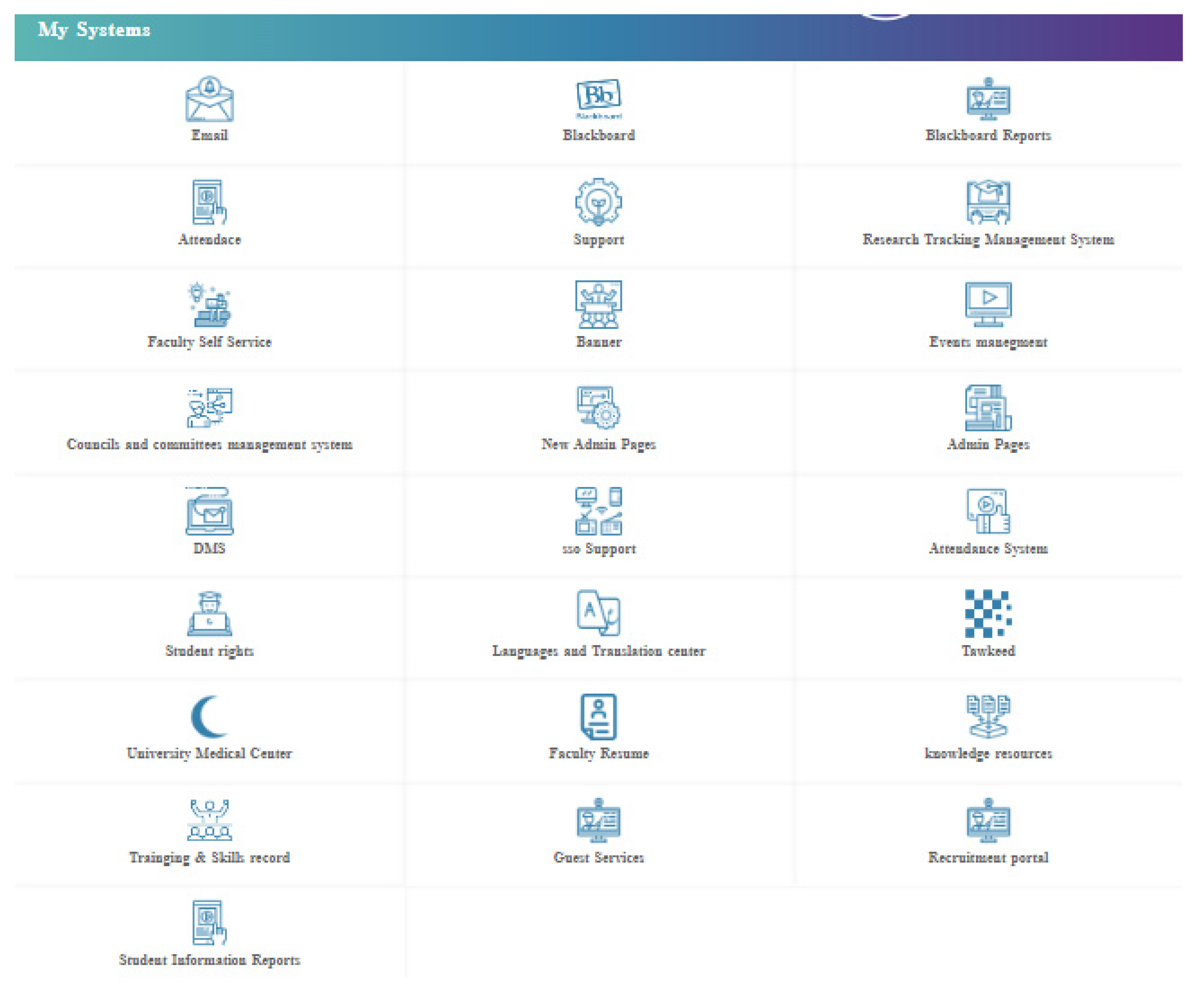
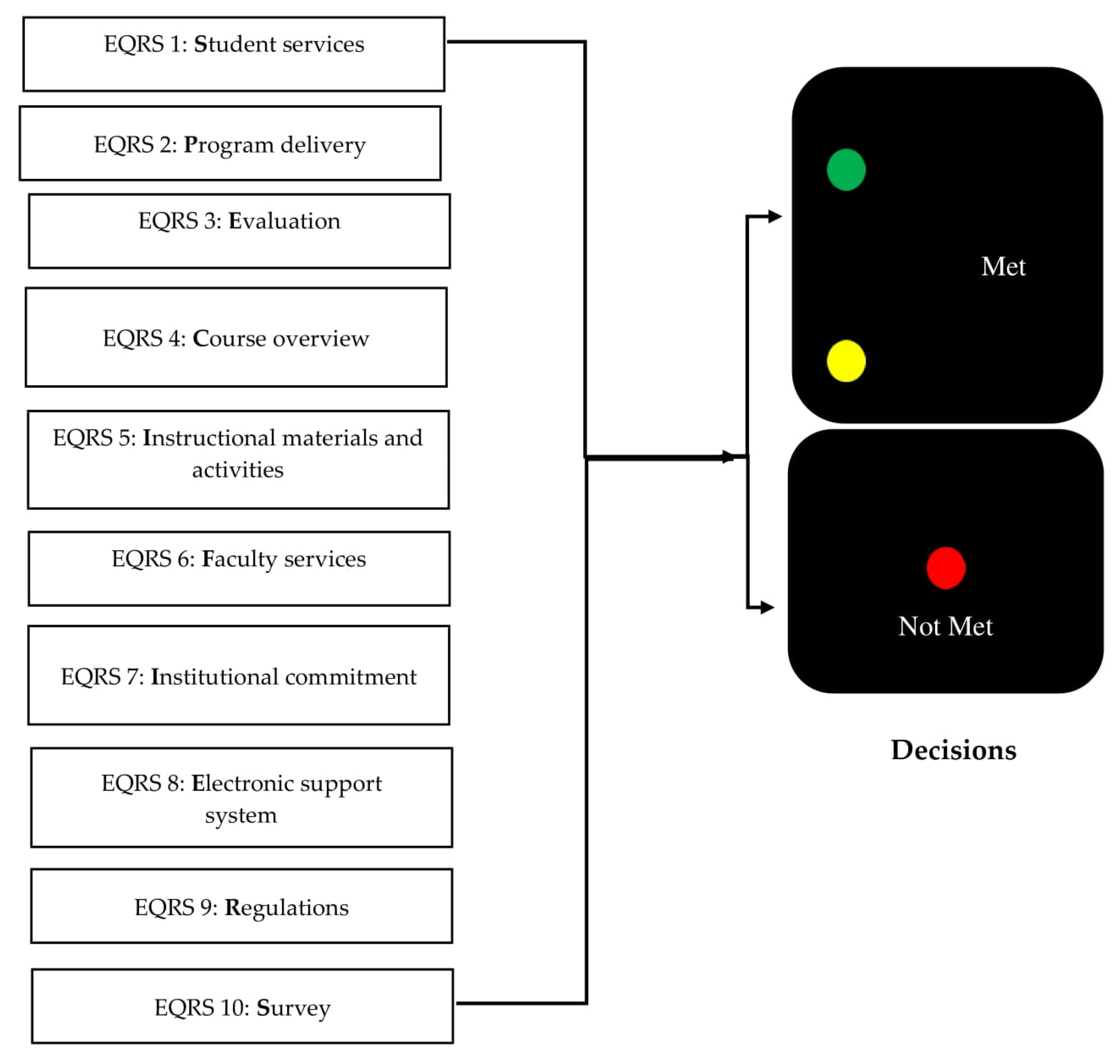
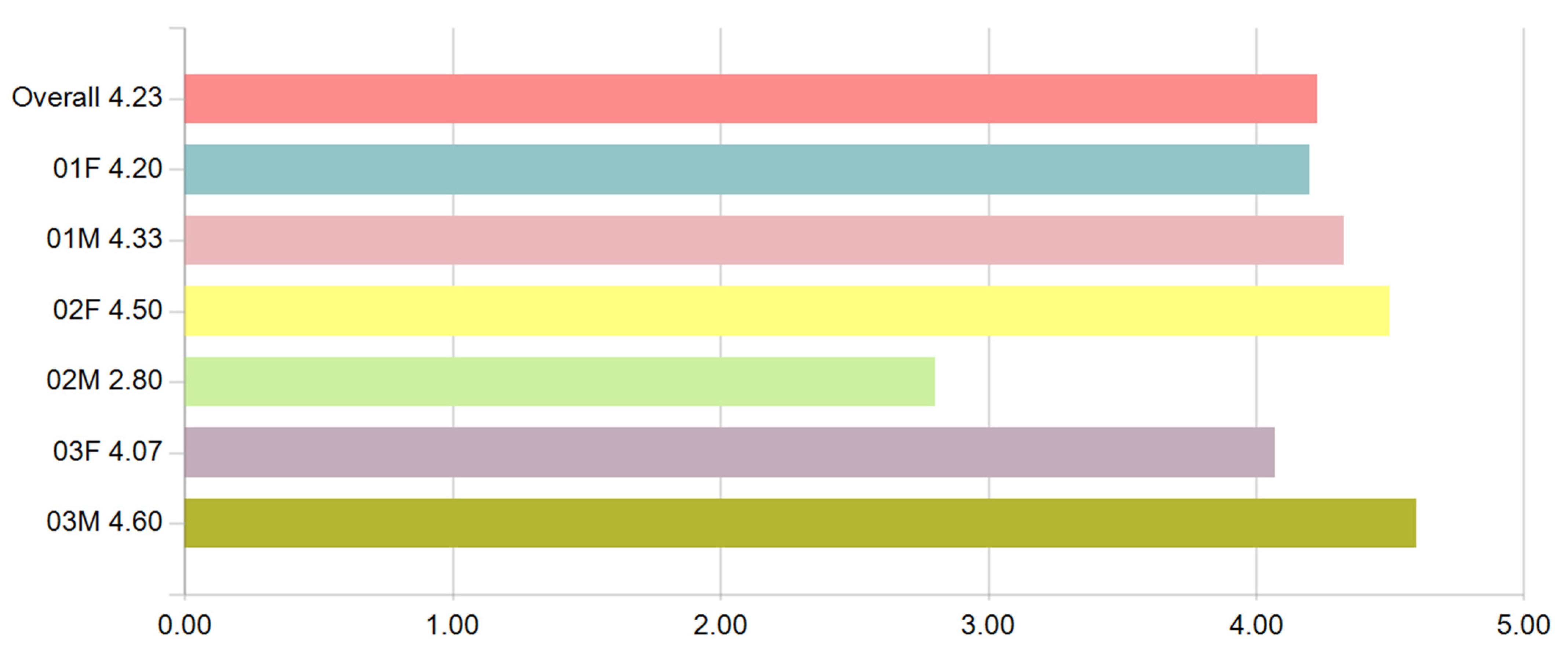
| Author(s)-Year Key Identified E-Learning Quality Dimensions |
|---|
| Timbi-Sisalima et al.-2022 [29] Student support, IT Infrastructure |
| Alam et al.-2021 [56] Service quality, System quality |
| Chen-2021 [57] Survey, Evaluation |
| Klašnja-Milićević & Ivanović-2021 [58] Regulations |
| Choudhury & Pattnaik-2020 [59] Institutional support, Technology design, |
| E-Learning environment, Evaluation |
| Lee et al.-2019 [60] Survey, Institutional factors |
| Mahony & Hall-2017 [61] Technological environment |
| Sadeghi-2017 [62] Technical support, Evaluation, Resource support |
| Azeiteiro et al.-2015 [63] Resource materials, Evaluation |
| Masoumi & Lindström-2012 [64] Course structure, Institutional support, Evaluation, |
| Faculty support, Student support, IT support |
| Jung-2011 [51] Faculty support, Student support, |
| Resource materials and IT infrastructure |
| Allen & Seaman-2010 [65] Course structure, Institutional support, |
| Faculty support, Student support, Evaluation |
| Sangrà & González-Sanmamed-2010 [66] Institutional capability, Learning delivery services |
| Lee-Post-2009 [67] System quality, Service quality |
| Hansson-2008 [55] Instructional materials, Faculty support, Student support, Institutional support, Regulations, IT support Marshall et al.-2007 [68] Institutional support, Commitment |
| Institutional support, Regulations, IT support |
| Pawlowski-2007 [69] Faculty support, Student support, Evaluation |
| Fresen-2007 [70] Institutional factors, Technology factors, Instructional design |
| Johnson-2006 [71] IT infrastructure |
| Ehlers-2004 [72] Faculty support, IT support |
| Evaluation Area Department Average Standard Deviation | Min | Max | ||
|---|---|---|---|---|
| Course Evaluation: | ≥3.00 | To be calculated after survey | 3.00 | 5.00 |
| Faculty Evaluation: | ≥3.00 | To be calculated after survey | 3.00 | 5.00 |
| General Evaluation: | ≥3.00 | To be calculated after survey | 3.00 | 5.00 |
| Total Score: | ≥3.00 | |||
| Competency | Department Average | College Average | University Average | Standard Deviation | Min | Max |
|---|---|---|---|---|---|---|
| Course assessment | 4.31 | 4.2 | 4.26 | +/−0.97 | 3 | 5 |
| Professor assessment | 4.41 | 4.34 | 4.39 | +/−1.03 | 3 | 5 |
| General assessment | 4.23 | 4.13 | 4.2 | +/−1.01 | 3 | 5 |
| Total Score | 4.32 | |||||
| Standard Criteria | Points Assigned | Aims | Criteria Levels | Evidence | Results | Status |
|---|---|---|---|---|---|---|
| EQRS 1: 1.1 Availability of student services. (1 point) 1.2 Mode of availability of student services. (1 point) 1.3 Tutorials on how to access student services. (1 point) | 3 | Student services enable students to access institutional support services, such as an admissions-related link, registration-related link, academic advising-related link, raising tickets for course- and program-related issues, etc. | 1-Moderately Important 1 point: At least two out of three reviewers must decide it was "Met" 0 point: At least two out of three reviewers must decide it was "Not Met" | Available and stated clearly. Available, but not stated clearly. Neither available nor stated clearly. | Met/Not Met |  Red Zone: Red Zone:Immediate action is required to address the issue.  Yellow Zone: Action is required before it becomes catastrophic and moves to the Red Zone Yellow Zone: Action is required before it becomes catastrophic and moves to the Red Zone Green Zone: Continuous improvements must be carried on either to maintain the status or to improve it. Green Zone: Continuous improvements must be carried on either to maintain the status or to improve it. |
| EQRS 2: Program delivery 2.1 Program outline and Program schedule are available and easy to access. (3 points) 2.2 The Program- Level Objectives (PLOs) are available, aligned with course contents, coursework, semester work, and course activities. These are measurable. (3 points) 2.3 The Course-Level Objectives (CLOs) are available, aligned with course contents, coursework, semester work, and course activities. These are measurable. (3 points) 2.4 The Module-Level Objectives (MLOs) are available and are aligned with course contents, coursework, semester work, and course activities. These are measurable. (3 points) 2.5 MLOs support the CLOs and the CLOs further support the PLOs. (3 points) 2.6 LMS and other related applications are supporting the teaching and learning process and are easy to access.(3 points) 2.7 Tutorial videos related to program information are available and easy to access. (3 points) | 21 | Program delivery enables attaining the vision and mission statement of the institute by aligning MLOs with CLOs, and CLOs with PLOs. | 3-Extremely Important 3 points: At least two out of three reviewers must decide it was "Met" 0 point: At least two out of three reviewers must decide it was "Not Met" | Available and stated clearly. Available, but not stated clearly. Neither available nor stated clearly. | Met/Not Met |  Red Zone: Red Zone:Immediate action is required to address the issue.  Yellow Zone: Yellow Zone:Action is required before it becomes catastrophic and moves to the Red Zone.  Green Zone: Green Zone:Continuous improvements must be carried on either to maintain the status or to improve it. |
| EQRS 3: Evaluation of the course 3.1 Evaluation strategies are suitable and able to assess the E-Learning quality. (3 points) 3.2 Grade distribution plan is available and stated clearly. (3 points) 3.3 Course Grading policy and course guidelines. (3 points) 3.4 Attainment levels of PLOs, CLOs, and MLOs are easy to measure. (3 points) 3.5 Evaluation comments and feedback are available for students. (3 points) | 15 | Evaluation of the course is employed in a way that links to the PLOs, CLOs, and MLOs. It will further enable students to know their academic progress throughout the course. Instructors can also mentor students based on the course evaluation to perform well in their respective courses. | 3-Extremely Important 3 points: At least two out of three reviewers must decide it was "Met" 0 point: At least two out of three reviewers must decide it was "Not Met" | Available and stated clearly. Available, but not stated clearly. Neither available nor stated clearly. | Met/Not Met |  Red Zone: Red Zone:Immediate action is required to address the issue.  Yellow Zone: Yellow Zone:Action is required before it becomes catastrophic and moves to the Red Zone.  Green Zone: Green Zone:Continuous improvements must be carried on either to maintain the status or to improve it. |
| EQRS 4: Course overview 4.1 Start here option is available. (2 points) 4.2 Course description is available. (2 points) 4.3 Course objectives are stated clearly. (2 points) 4.4 Coursework and course activities are available, easy to access, and stated clearly. (2 points) 4.5 Course structure and syllabus are available. (2 points) 4.6 Course schedule is available. (2 points) 4.7 Course calendar is available. (2 points) 4.8 Tutorial videos related to how to advance in the course are available and easy to understand. (2 points) 4.9 Instructor information is available and easy to access. (2 points) 4.10 Communication link to interact with the course instructor is available and easy to access. (2 points) 4.11 Information related to the technical requirements and the IT skills required for the course are available and clearly stated. (2 points) | 22 | The course overview enables students to identify course-related information that will further assist them in knowing the course requirements well in advance to set their academic goals. | 2-Important 2 points: At least two out of three reviewers must decide it was "Met” 0 point: At least two out of three reviewers must decide it was "Not Met” | Available and stated clearly. Available, but not stated clearly. Neither available nor stated clearly. | Met/Not Met |  Red Zone: Red Zone:Immediate action is required to address the issue.  Yellow Zone: Yellow Zone:Action is required before it becomes catastrophic and moves to the Red Zone.  Green Zone: Green Zone:Continuous improvements must be carried on either to maintain the status or to improve it. |
| EQRS 5: Instructional materials and activities 5.1 Instructional materials are available and easy to access. (3 points) 5.2 Alignment of instructional materials with PLOs, CLOs and MLOs has been performed properly. (3 points) 5.3 Linkage of instructional materials with activities on the course is clearly visible. (3 points) 5.4 Instructional materials are relevant, accurate, and authentic. (3 points) 5.5 Variety of instructional materials, such as e-books, video links, web links, discussion forum, etc., are available. (3 points) | 15 | Instructional materials enable students to attain PLOs, CLOs, and MLOs. Instructors can use a variety of instructional strategies for enhancing the levels of the quality of the teaching and learning process. | 3-Extremely Important 3 points: At least two out of three reviewers must decide it was "Met" 0 point: At least two out of three reviewers must decide it was "Not Met" | Available and stated clearly. Available, but not stated clearly. Neither available nor stated clearly. | Met/Not Met |  Red Zone: Red Zone:Immediate action is required to address the issue.  Yellow Zone: Yellow Zone:Action is required before it becomes catastrophic and moves to the Red Zone.  Green Zone: Green Zone:Continuous improvements must be carried on either to maintain the status or to improve it. |
| EQRS 6: Faculty services 6.1 Technical tools or links for interacting with students are available for the faculty. (1 point) 6.2 Availability of faculty services to resolve faculty members issues related to academics. (1 point) 6.3 Mode (Online/Offline/Both) of availability of faculty services. (1 point) 6.4 Tutorials videos for faculty members on how to access faculty services. (1 point) | 4 | The faculty services enable faculty members to access institutional support services, such as employment-related informative links, career advancement-related links, raising tickets for course- and program-related issues links, etc. | 1-Moderately Important 1 point: At least two out of three reviewers must decide it was "Met" 0 point: At least two out of three reviewers must decide it was "Not Met" | Available and stated clearly. Available, but not stated clearly. Neither available nor stated clearly. | Met/Not Met |  Red Zone: Red Zone:Immediate action is required to address the issue.  Yellow Zone: Yellow Zone:Action is required before it becomes catastrophic and moves to the Red Zone.  Green Zone: Green Zone:Continuous improvements must be carried on either to maintain the status or to improve it. |
| EQRS 7: Institutional commitment 7.1 Institute’s commitment towards delivering E-Learning quality is visible and is aligned with the vision and mission statements. (1 point) 7.2 Institute has been taking regular and appropriate steps towards delivering quality in learning. (1 point) 7.3 Institute is investing time and money to fulfil its commitment. (1 point) | 3 | Institutional commitment to supporting the stakeholders, such as students, faculty members, and other staff at the institute, in understanding the vision and mission statement of the institute. By understanding the institute commitment, each will contribute their best and try to succeed in their endeavour. | 1-Moderately Important 1 point: At least two out of three reviewers must decide it was "Met" 0 point: At least two out of three reviewers must decide it was "Not Met" | Available and stated clearly. Available, but not stated clearly. Neither available nor stated clearly. | Met/Not Met |  Red Zone: Red Zone:Immediate action is required to address the issue.  Yellow Zone: Yellow Zone:Action is required before it becomes catastrophic and moves to the Red Zone.  Green Zone: Green Zone:Continuous improvements must be carried on either to maintain the status or to improve it. |
| EQRS 8: Electronic support systems 8.1 LMSs are easy to use and support the teaching and learning process. (1 point) 8.2 Technical support service is available for both students and instructors. (1 point) 8.3 Tutorial videos are available for first-time visitors. (1 point) 8.4 Frequently Asked Questions (FAQs) are available. (1 point) 8.5 Technical support is available 24 × 7. (1 point) 8.6 Technical support is available through multiple platforms. (1 point) | 6 | The electronic support systems enable students to access the technical support provided by the institution. | 1-Moderately Important 1 point: At least two out of three reviewers must decide it was "Met" 0 point: At least two out of three reviewers must decide it was "Not Met" | Available and stated clearly. Available, but not stated clearly. Neither available nor stated clearly. | Met/Not Met |  Red Zone: Red Zone:Immediate action is required to address the issue.  Yellow Zone: Yellow Zone:Action is required before it becomes catastrophic and moves to the Red Zone.  Green Zone: Green Zone:Continuous improvements must be carried on either to maintain the status or to improve it. |
| EQRS 9: Regulations 9.1 Program and course regulations are available and stated clearly. (1 point) 9.2 Exam regulations are available and stated clearly. (1 point) 9.3 Administrative regulations are available and stated clearly. (1 point) 9.4 Admission and registration regulations are available and stated clearly. (1 point) 9.5 Disciplinary regulations are available and stated clearly. (1 point) | 5 | Regulations enable the institute in the smooth functioning of all its academic obligations by delivering quality in all aspects of the teaching and learning process. | 1-Moderately Important 1 point: At least two out of three reviewers must decide it was "Met" 0 point: At least two out of three reviewers must decide it was "Not Met" | Available and stated clearly. Available, but not stated clearly. Neither available nor stated clearly. | Met/Not Met |  Red Zone: Red Zone:Immediate action is required to address the issue.  Yellow Zone: Yellow Zone:Action is required before it becomes catastrophic and moves to the Red Zone.  Green Zone: Green Zone:Continuous improvements must be carried on either to maintain the status or to improve it. |
| EQRS 10: Survey 10.1 Program-related survey is conducted. (1 point) 10.2 Course content-related survey is conducted on a regular basis. (1 point) 10.3 Coursework- related survey is conducted. (1 point) 10.4 Semester work- related survey is conducted. (1 point) 10.5 Instructor-related survey is conducted. (1 point) 10.6 Technical service satisfaction-related survey is conducted. (1 point) | 6 | Survey enables faculties, higher authorities, Quality Department, and policy makers in delivering quality in all their endeavors. They will understand the gap between what is expected and what was delivered. | 1-Moderately Important 1 point: At least two out of three reviewers must decide it was "Met" 0 point: At least two out of three reviewers must decide it was "Not Met" | Available and stated clearly. Available, but not stated clearly. Neither available nor stated clearly. | Met/Not Met |  Red Zone: Red Zone:Immediate action is required to address the issue.  Yellow Zone: Yellow Zone:Action is required before it becomes catastrophic and moves to the Red Zone.  Green Zone: Green Zone:Continuous improvements must be carried on either to maintain the status or to improve it. |
| Points Range | Decision (Met/Not Met) | Status | Course Quality Ratings | Actions to Be Taken for Areas of Improvement | Person Responsible for Implementing Actions | E-Learning Requirements | Completion Timeline | Remarks |
|---|---|---|---|---|---|---|---|---|
| 0–59 | Not Met |  Red Zone | No Rating | |||||
| 60–64 | Met |  Yellow Zone | D Rating | |||||
| 65–69 | D+ Rating | |||||||
| 70–74 | C Rating | |||||||
| 75–79 | C+ Rating | |||||||
| 80–84 | Met |  Green Zone | B Rating | |||||
| 85–89 | B+ Rating | |||||||
| 90–94 | A Rating | |||||||
| 95–100 | A+ Rating |
| Top Questions | |||
| 1 | The instructor uses blackboard tools effectively | Professor assessment | 4.51 |
| 2 | My instructor(s) were fully committed to the delivery of the course. (E.g., classes started on time, instructor always present, material well prepared, etc.) | Professor assessment | 4.48 |
| 3 | The things I had to do to succeed in the course, including graded assignments and tasks; and criteria for assessment, were made clear to me at the beginning of the course | Course assessment: | 4.48 |
| Lowest Questions | |||
| 1 | This course helped me to improve my ability to think and solve problems rather than just memorize information | Course assessment: | 4.14 |
| 2 | Grading of my tests and assignments in this course was fair and reasonable | Course assessment: | 4.19 |
| 3 | Marks for assignments and tests in this course were given to me within a reasonable time | Course assessment: | 4.20 |
Disclaimer/Publisher’s Note: The statements, opinions and data contained in all publications are solely those of the individual author(s) and contributor(s) and not of MDPI and/or the editor(s). MDPI and/or the editor(s) disclaim responsibility for any injury to people or property resulting from any ideas, methods, instructions or products referred to in the content. |
© 2023 by the authors. Licensee MDPI, Basel, Switzerland. This article is an open access article distributed under the terms and conditions of the Creative Commons Attribution (CC BY) license (https://creativecommons.org/licenses/by/4.0/).
Share and Cite
Singh, P.; Alhassan, I.; Binsaif, N.; Alhussain, T. Standard Measuring of E-Learning to Assess the Quality Level of E-Learning Outcomes: Saudi Electronic University Case Study. Sustainability 2023, 15, 844. https://doi.org/10.3390/su15010844
Singh P, Alhassan I, Binsaif N, Alhussain T. Standard Measuring of E-Learning to Assess the Quality Level of E-Learning Outcomes: Saudi Electronic University Case Study. Sustainability. 2023; 15(1):844. https://doi.org/10.3390/su15010844
Chicago/Turabian StyleSingh, Prakash, Ibrahim Alhassan, Nasser Binsaif, and Thamer Alhussain. 2023. "Standard Measuring of E-Learning to Assess the Quality Level of E-Learning Outcomes: Saudi Electronic University Case Study" Sustainability 15, no. 1: 844. https://doi.org/10.3390/su15010844
APA StyleSingh, P., Alhassan, I., Binsaif, N., & Alhussain, T. (2023). Standard Measuring of E-Learning to Assess the Quality Level of E-Learning Outcomes: Saudi Electronic University Case Study. Sustainability, 15(1), 844. https://doi.org/10.3390/su15010844









